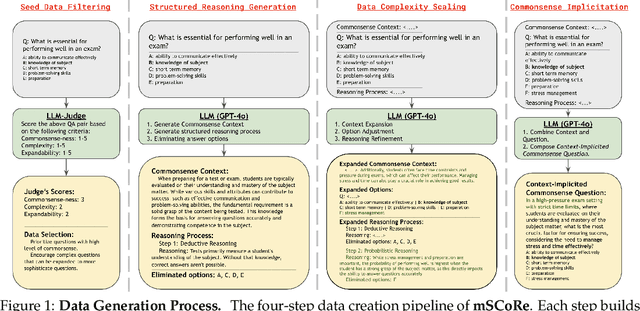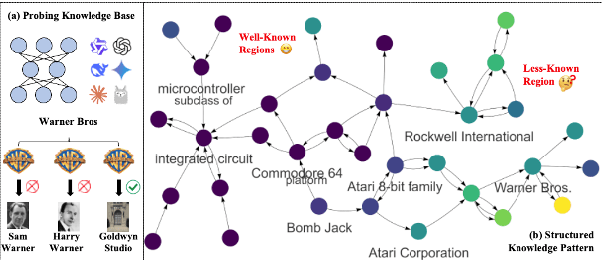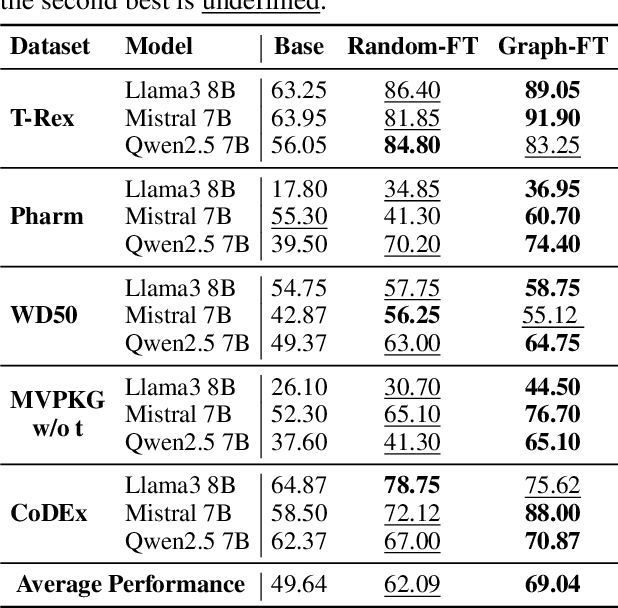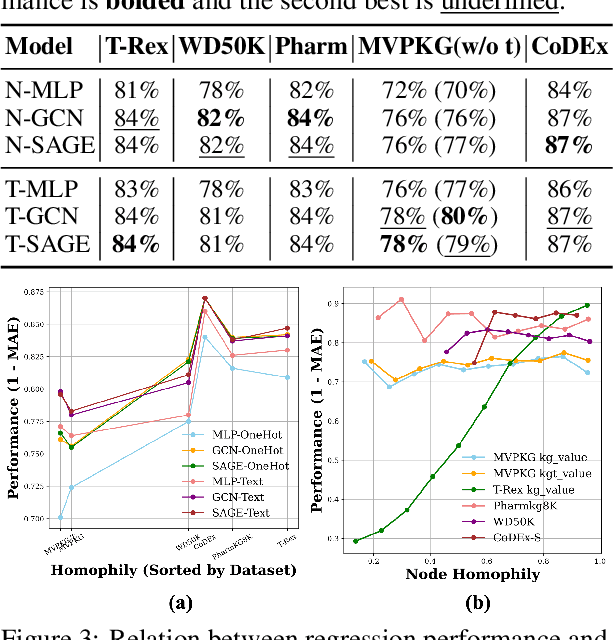Franck Dernoncourt
Adobe Research
Structured Uncertainty guided Clarification for LLM Agents
Nov 11, 2025Abstract:LLM agents extend large language models with tool-calling capabilities, but ambiguous user instructions often lead to incorrect invocations and task failures. We introduce a principled formulation of structured uncertainty over tool-call parameters, modeling joint tool-argument clarification as a POMDP with Expected Value of Perfect Information (EVPI) objective for optimal question selection and aspect-based cost modeling to prevent redundancy. Our SAGE-Agent leverages this structured uncertainty to achieve superior efficiency: increasing coverage on ambiguous tasks by 7-39\% while reducing clarification questions by 1.5-2.7$\times$ compared to strong prompting and uncertainty-based baselines. We present ClarifyBench, the first multi-turn tool-augmented disambiguation benchmark with realistic LLM-based user simulation across diverse domains including document editing, vehicle control, and travel booking. Additionally, we demonstrate that structured uncertainty provides effective training signals for reinforcement learning, boosting When2Call accuracy from 36.5\% to 65.2\% (3B model) and 36.7\% to 62.9\% (7B model) through uncertainty-weighted GRPO training. These results establish structured uncertainty as a principled, efficient approach for tool-augmented agents, improving both task success and interaction efficiency in real-world scenarios.
Steering MoE LLMs via Expert (De)Activation
Sep 11, 2025



Abstract:Mixture-of-Experts (MoE) in Large Language Models (LLMs) routes each token through a subset of specialized Feed-Forward Networks (FFN), known as experts. We present SteerMoE, a framework for steering MoE models by detecting and controlling behavior-linked experts. Our detection method identifies experts with distinct activation patterns across paired inputs exhibiting contrasting behaviors. By selectively (de)activating such experts during inference, we control behaviors like faithfulness and safety without retraining or modifying weights. Across 11 benchmarks and 6 LLMs, our steering raises safety by up to +20% and faithfulness by +27%. In adversarial attack mode, it drops safety by -41% alone, and -100% when combined with existing jailbreak methods, bypassing all safety guardrails and exposing a new dimension of alignment faking hidden within experts.
mSCoRe: a $M$ultilingual and Scalable Benchmark for $S$kill-based $Co$mmonsense $Re$asoning
Aug 13, 2025



Abstract:Recent advancements in reasoning-reinforced Large Language Models (LLMs) have shown remarkable capabilities in complex reasoning tasks. However, the mechanism underlying their utilization of different human reasoning skills remains poorly investigated, especially for multilingual commonsense reasoning that involves everyday knowledge across different languages and cultures. To address this gap, we propose a \textbf{M}ultilingual and Scalable Benchmark for \textbf{S}kill-based \textbf{Co}mmonsense \textbf{Re}asoning (\textbf{mSCoRe}). Our benchmark incorporates three key components that are designed to systematically evaluate LLM's reasoning capabilities, including: (1) a novel taxonomy of reasoning skills that enables fine-grained analysis of models' reasoning processes, (2) a robust data synthesis pipeline tailored specifically for commonsense reasoning evaluation, and (3) a complexity scaling framework allowing task difficulty to scale dynamically alongside future improvements in LLM abilities. Extensive experiments on eights state-of-the-art LLMs of varying sizes and training approaches demonstrate that \textbf{mSCoRe} remains significantly challenging for current models, particularly at higher complexity levels. Our results reveal the limitations of such reasoning-reinforced models when confronted with nuanced multilingual general and cultural commonsense. We further provide detailed analysis on the models' reasoning processes, suggesting future directions for improving multilingual commonsense reasoning capabilities.
A Survey on Long-Video Storytelling Generation: Architectures, Consistency, and Cinematic Quality
Jul 09, 2025

Abstract:Despite the significant progress that has been made in video generative models, existing state-of-the-art methods can only produce videos lasting 5-16 seconds, often labeled "long-form videos". Furthermore, videos exceeding 16 seconds struggle to maintain consistent character appearances and scene layouts throughout the narrative. In particular, multi-subject long videos still fail to preserve character consistency and motion coherence. While some methods can generate videos up to 150 seconds long, they often suffer from frame redundancy and low temporal diversity. Recent work has attempted to produce long-form videos featuring multiple characters, narrative coherence, and high-fidelity detail. We comprehensively studied 32 papers on video generation to identify key architectural components and training strategies that consistently yield these qualities. We also construct a comprehensive novel taxonomy of existing methods and present comparative tables that categorize papers by their architectural designs and performance characteristics.
Context-Informed Grounding Supervision
Jun 18, 2025Abstract:Large language models (LLMs) are often supplemented with external knowledge to provide information not encoded in their parameters or to reduce hallucination. In such cases, we expect the model to generate responses by grounding its response in the provided external context. However, prior work has shown that simply appending context at inference time does not ensure grounded generation. To address this, we propose Context-INformed Grounding Supervision (CINGS), a post-training supervision in which the model is trained with relevant context prepended to the response, while computing the loss only over the response tokens and masking out the context. Our experiments demonstrate that models trained with CINGS exhibit stronger grounding in both textual and visual domains compared to standard instruction-tuned models. In the text domain, CINGS outperforms other training methods across 11 information-seeking datasets and is complementary to inference-time grounding techniques. In the vision-language domain, replacing a vision-language model's LLM backbone with a CINGS-trained model reduces hallucinations across four benchmarks and maintains factual consistency throughout the generated response. This improved grounding comes without degradation in general downstream performance. Finally, we analyze the mechanism underlying the enhanced grounding in CINGS and find that it induces a shift in the model's prior knowledge and behavior, implicitly encouraging greater reliance on the external context.
Forecasting Time Series with LLMs via Patch-Based Prompting and Decomposition
Jun 15, 2025Abstract:Recent advances in Large Language Models (LLMs) have demonstrated new possibilities for accurate and efficient time series analysis, but prior work often required heavy fine-tuning and/or ignored inter-series correlations. In this work, we explore simple and flexible prompt-based strategies that enable LLMs to perform time series forecasting without extensive retraining or the use of a complex external architecture. Through the exploration of specialized prompting methods that leverage time series decomposition, patch-based tokenization, and similarity-based neighbor augmentation, we find that it is possible to enhance LLM forecasting quality while maintaining simplicity and requiring minimal preprocessing of data. To this end, we propose our own method, PatchInstruct, which enables LLMs to make precise and effective predictions.
MS4UI: A Dataset for Multi-modal Summarization of User Interface Instructional Videos
Jun 14, 2025Abstract:We study multi-modal summarization for instructional videos, whose goal is to provide users an efficient way to learn skills in the form of text instructions and key video frames. We observe that existing benchmarks focus on generic semantic-level video summarization, and are not suitable for providing step-by-step executable instructions and illustrations, both of which are crucial for instructional videos. We propose a novel benchmark for user interface (UI) instructional video summarization to fill the gap. We collect a dataset of 2,413 UI instructional videos, which spans over 167 hours. These videos are manually annotated for video segmentation, text summarization, and video summarization, which enable the comprehensive evaluations for concise and executable video summarization. We conduct extensive experiments on our collected MS4UI dataset, which suggest that state-of-the-art multi-modal summarization methods struggle on UI video summarization, and highlight the importance of new methods for UI instructional video summarization.
LaMP-Cap: Personalized Figure Caption Generation With Multimodal Figure Profiles
Jun 06, 2025Abstract:Figure captions are crucial for helping readers understand and remember a figure's key message. Many models have been developed to generate these captions, helping authors compose better quality captions more easily. Yet, authors almost always need to revise generic AI-generated captions to match their writing style and the domain's style, highlighting the need for personalization. Despite language models' personalization (LaMP) advances, these technologies often focus on text-only settings and rarely address scenarios where both inputs and profiles are multimodal. This paper introduces LaMP-Cap, a dataset for personalized figure caption generation with multimodal figure profiles. For each target figure, LaMP-Cap provides not only the needed inputs, such as figure images, but also up to three other figures from the same document--each with its image, caption, and figure-mentioning paragraphs--as a profile to characterize the context. Experiments with four LLMs show that using profile information consistently helps generate captions closer to the original author-written ones. Ablation studies reveal that images in the profile are more helpful than figure-mentioning paragraphs, highlighting the advantage of using multimodal profiles over text-only ones.
A Graph Perspective to Probe Structural Patterns of Knowledge in Large Language Models
May 25, 2025



Abstract:Large language models have been extensively studied as neural knowledge bases for their knowledge access, editability, reasoning, and explainability. However, few works focus on the structural patterns of their knowledge. Motivated by this gap, we investigate these structural patterns from a graph perspective. We quantify the knowledge of LLMs at both the triplet and entity levels, and analyze how it relates to graph structural properties such as node degree. Furthermore, we uncover the knowledge homophily, where topologically close entities exhibit similar levels of knowledgeability, which further motivates us to develop graph machine learning models to estimate entity knowledge based on its local neighbors. This model further enables valuable knowledge checking by selecting triplets less known to LLMs. Empirical results show that using selected triplets for fine-tuning leads to superior performance.
ChartLens: Fine-grained Visual Attribution in Charts
May 25, 2025



Abstract:The growing capabilities of multimodal large language models (MLLMs) have advanced tasks like chart understanding. However, these models often suffer from hallucinations, where generated text sequences conflict with the provided visual data. To address this, we introduce Post-Hoc Visual Attribution for Charts, which identifies fine-grained chart elements that validate a given chart-associated response. We propose ChartLens, a novel chart attribution algorithm that uses segmentation-based techniques to identify chart objects and employs set-of-marks prompting with MLLMs for fine-grained visual attribution. Additionally, we present ChartVA-Eval, a benchmark with synthetic and real-world charts from diverse domains like finance, policy, and economics, featuring fine-grained attribution annotations. Our evaluations show that ChartLens improves fine-grained attributions by 26-66%.
 Add to Chrome
Add to Chrome Add to Firefox
Add to Firefox Add to Edge
Add to Edge